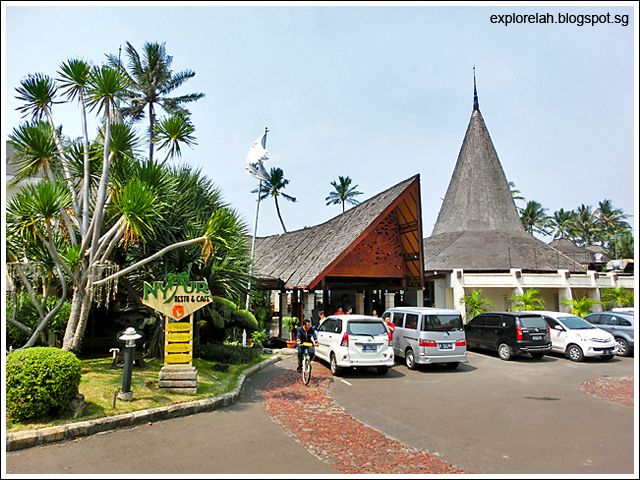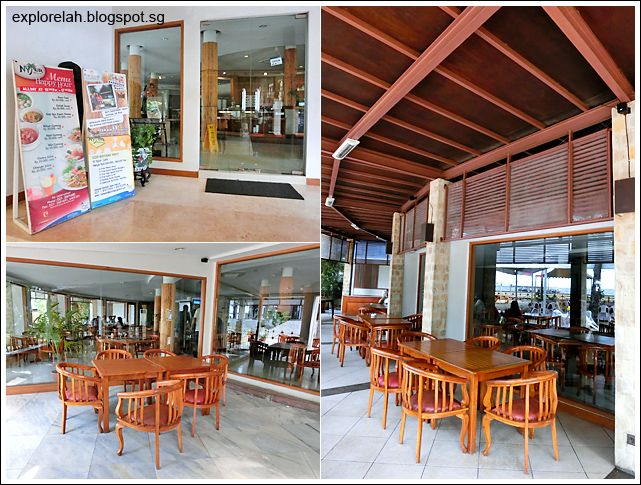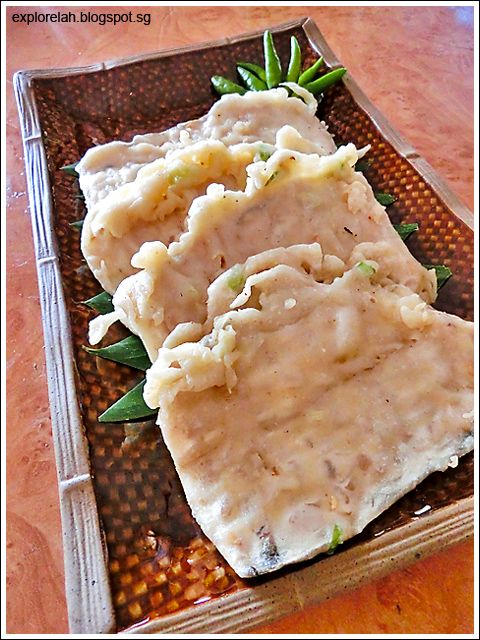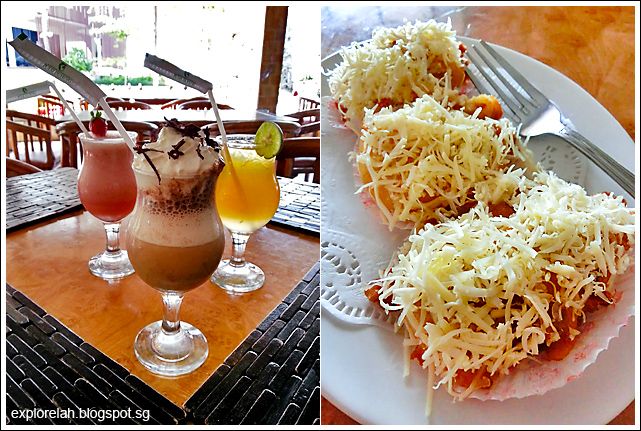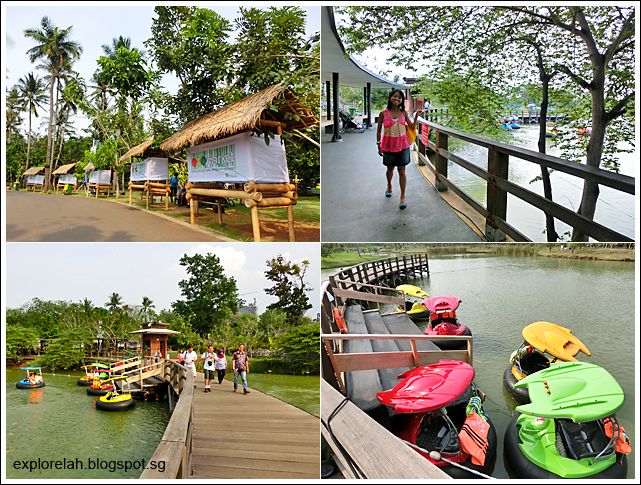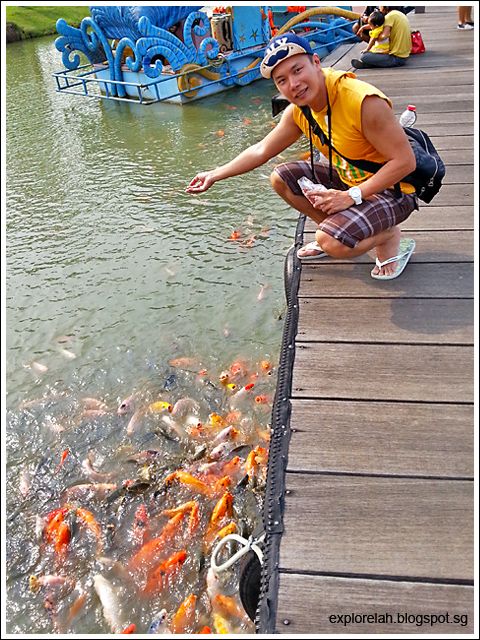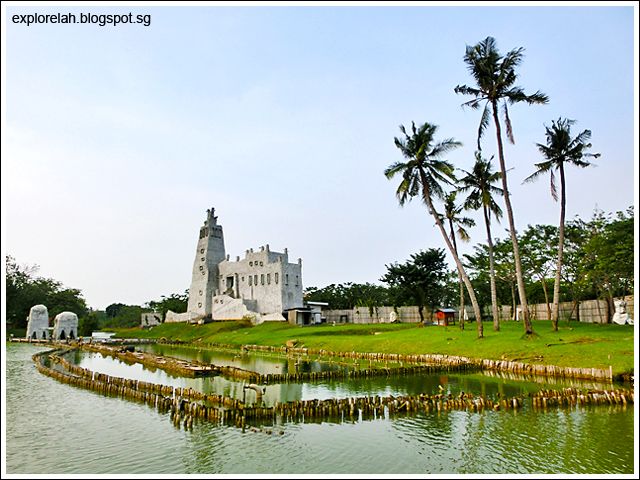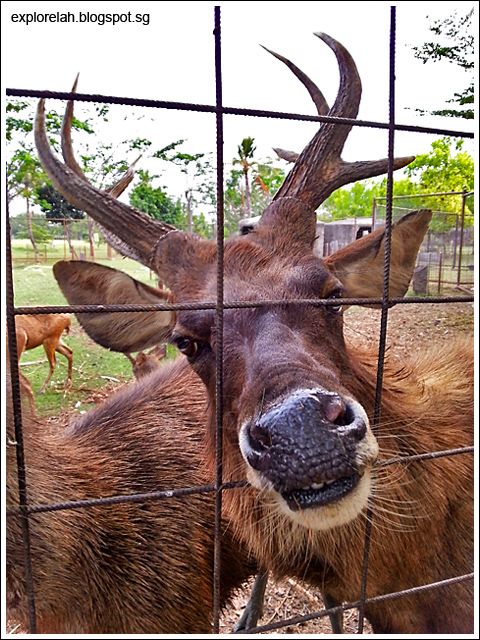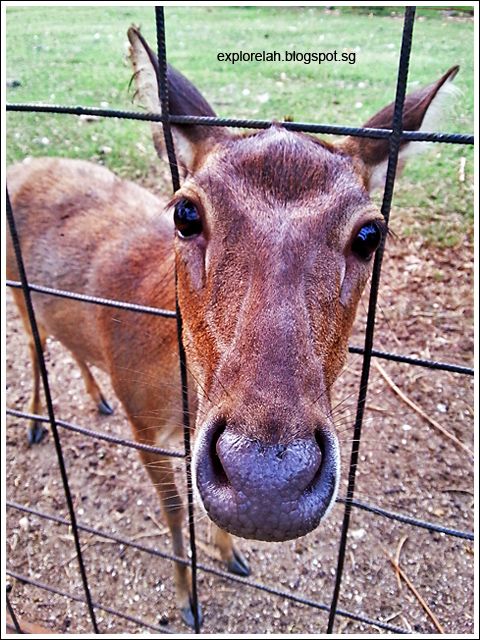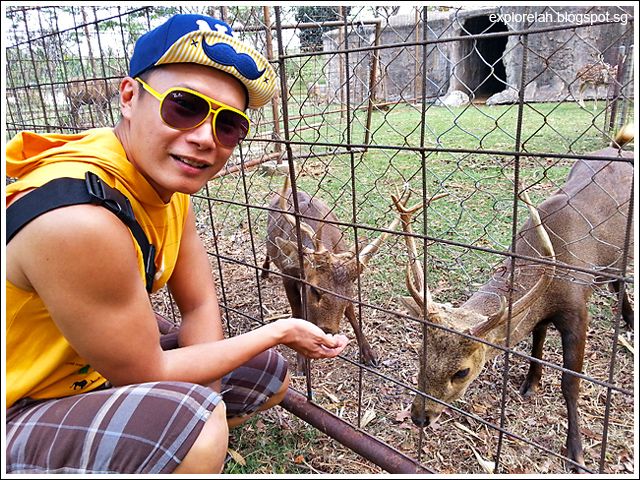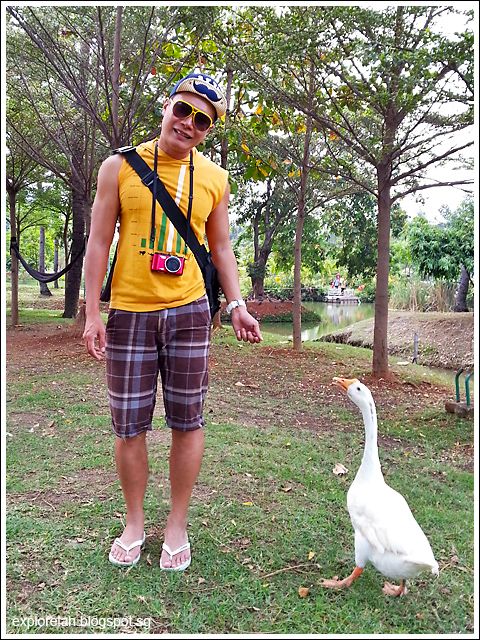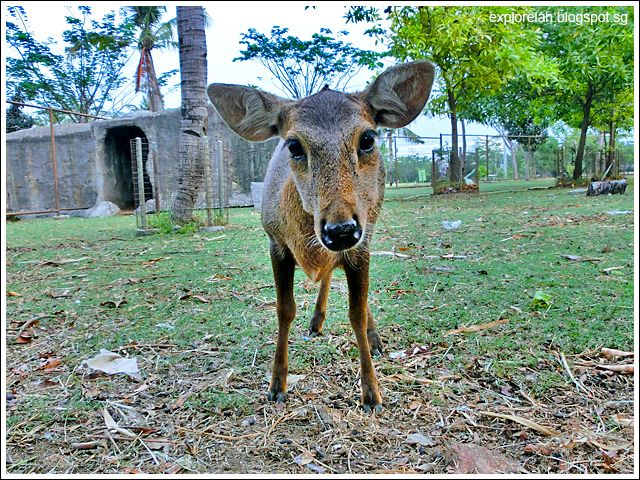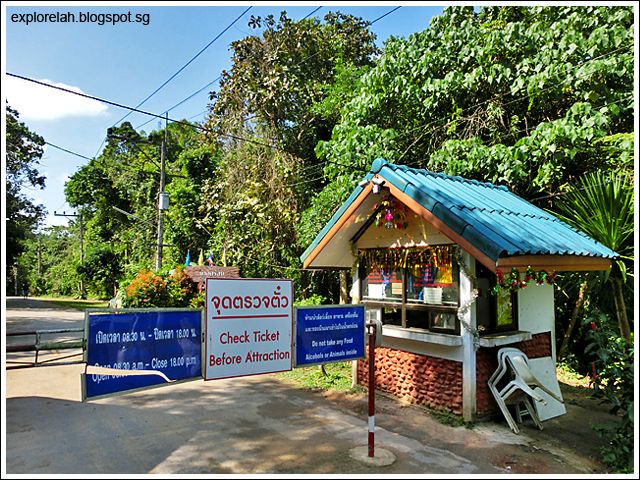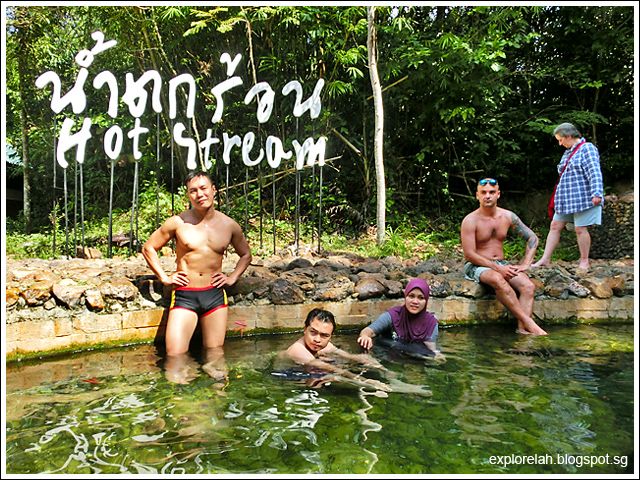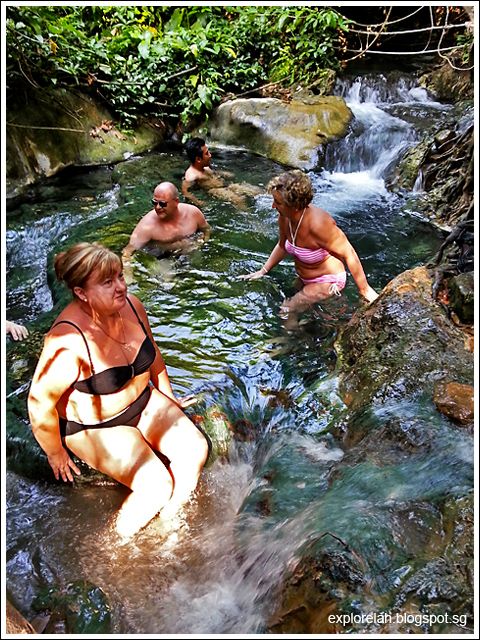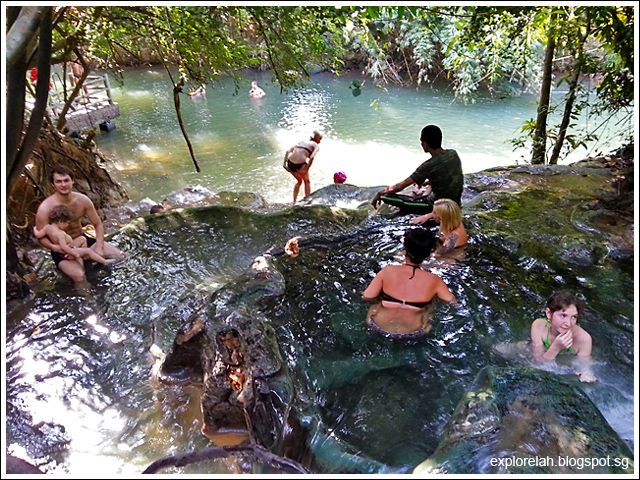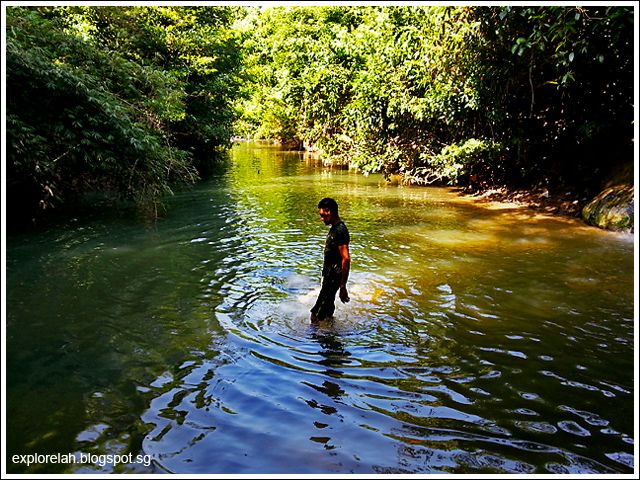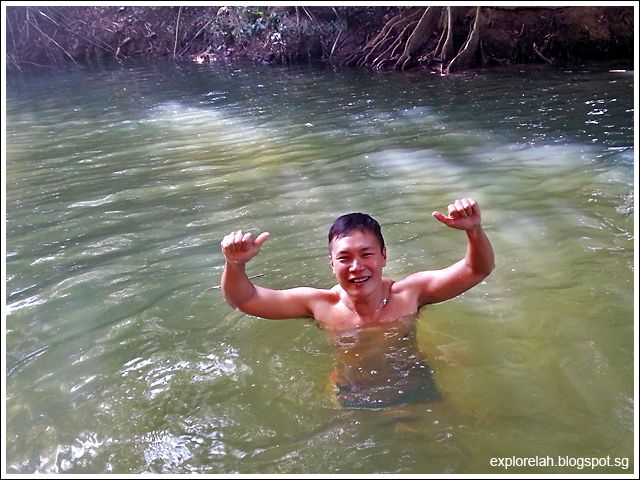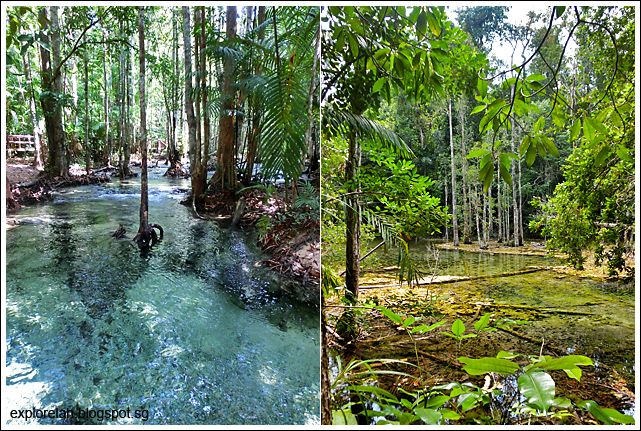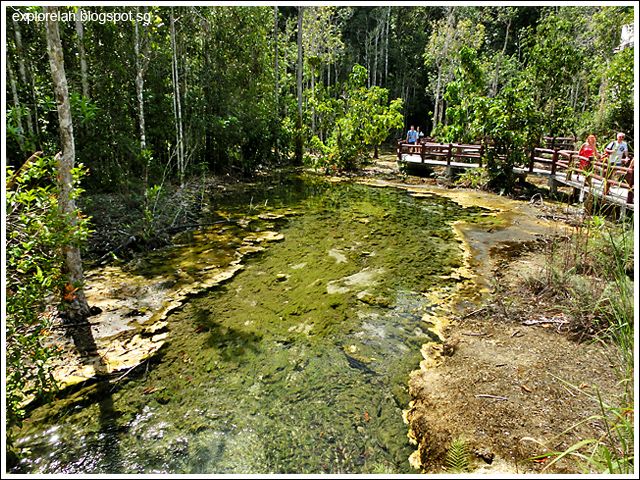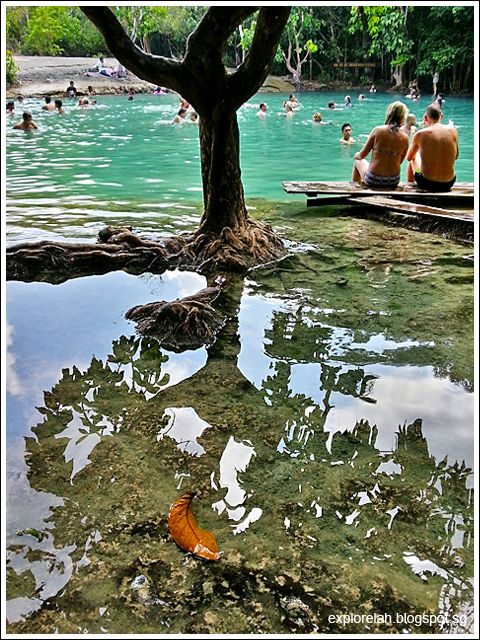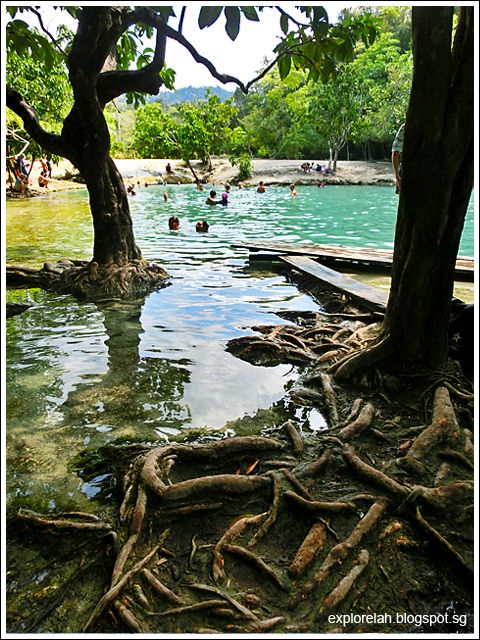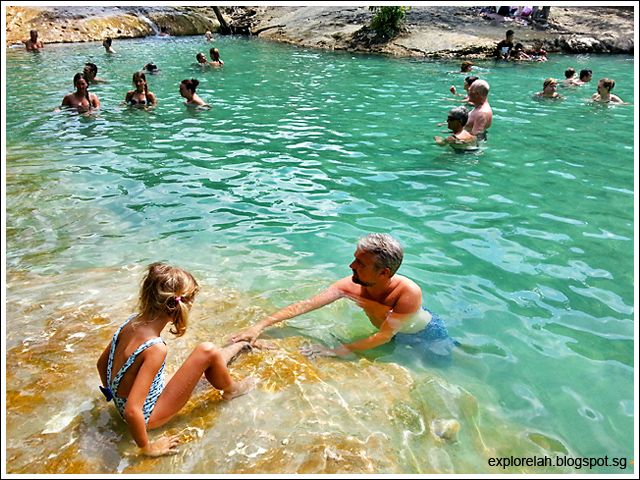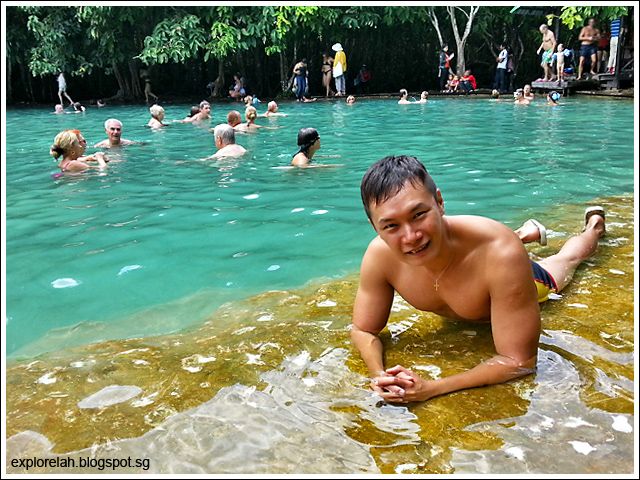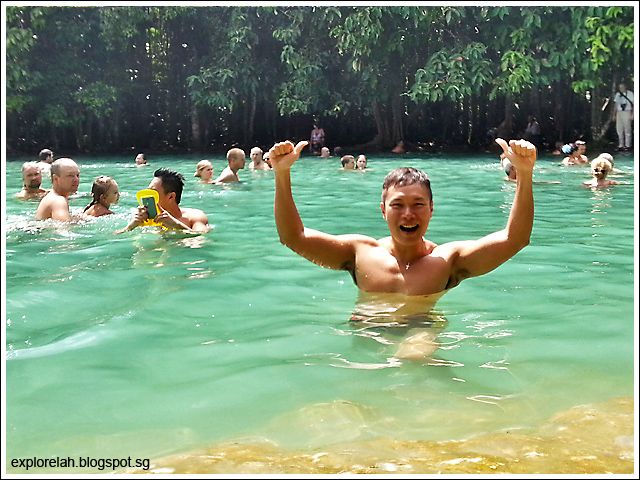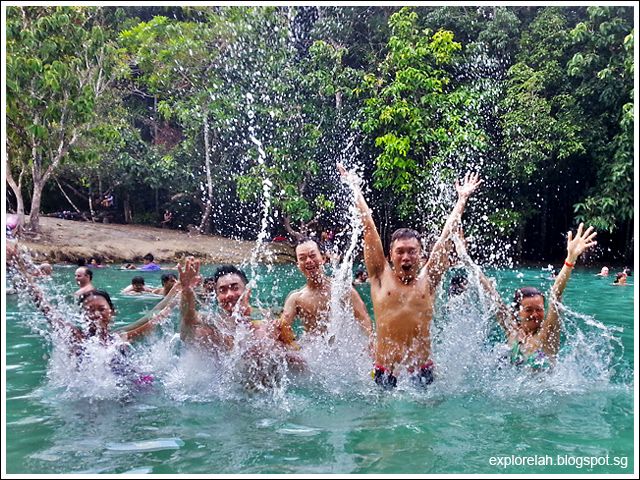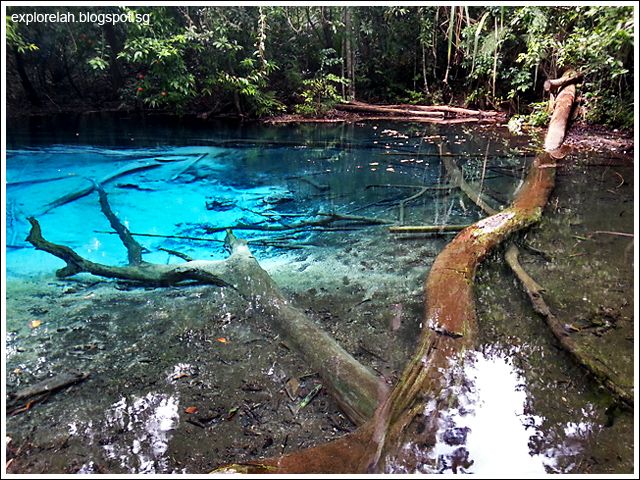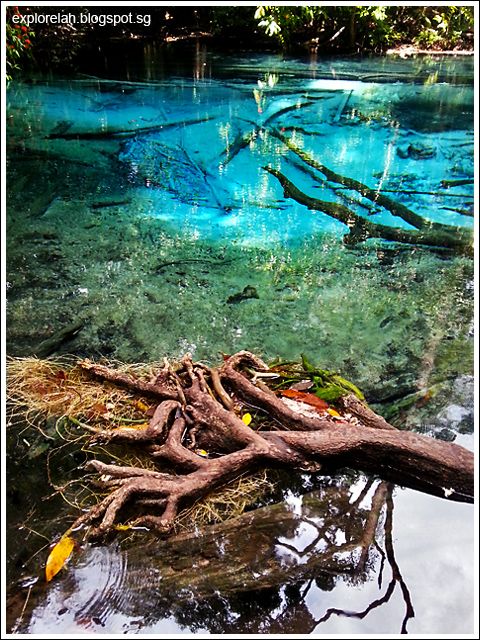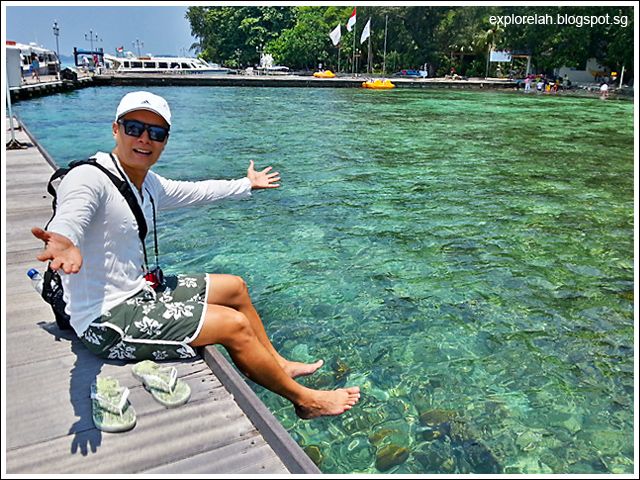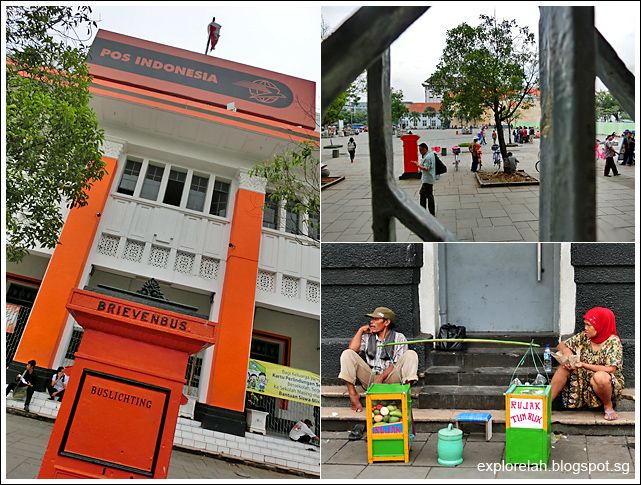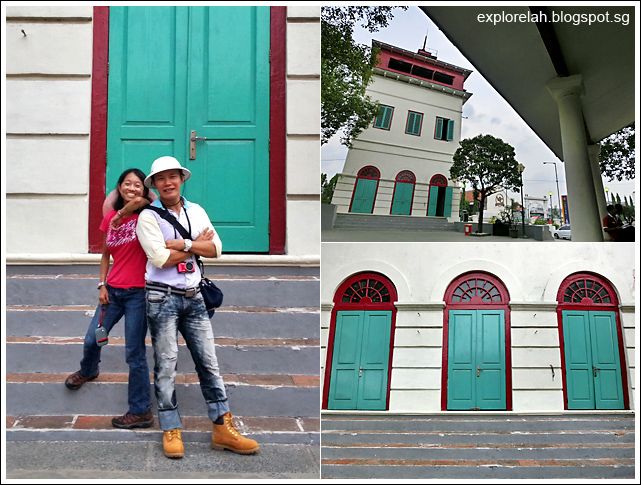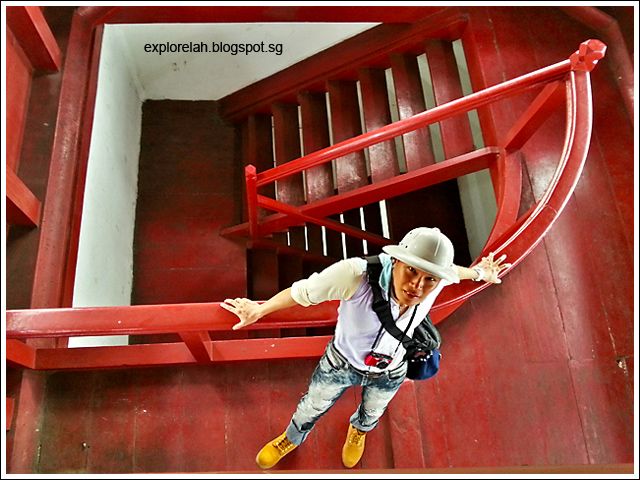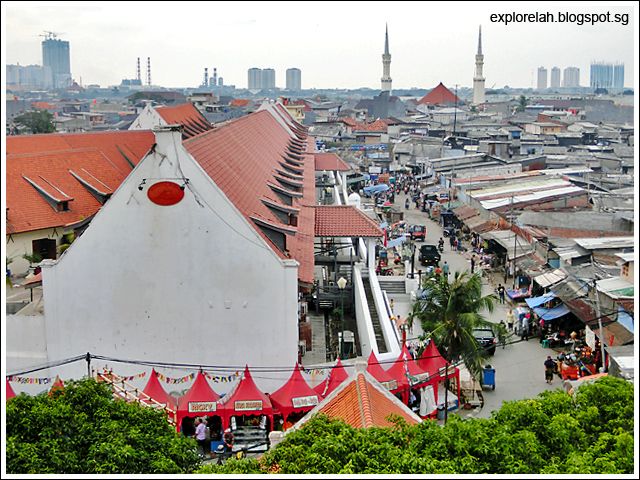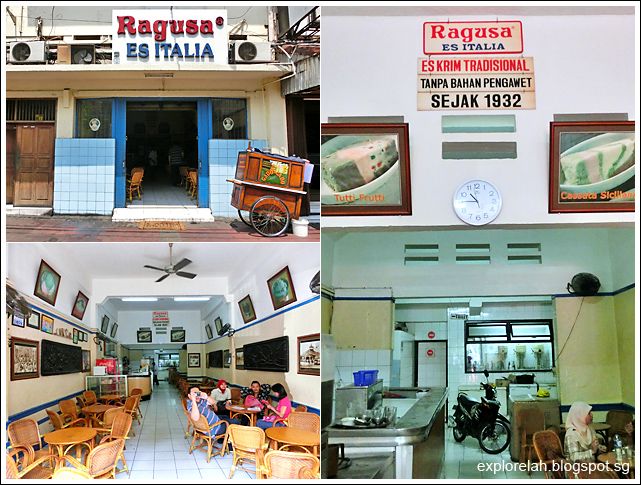Date of Exploration : 1 Nov 2013
Being the political and financial heart of Indonesia, I've always associated Jakarta with business travel and hardly considered it a vacation destination. So when I received an invitation to expand my mind about the play factor in the Indonesian capital city, I accepted it with anticipation... and also a tingle of trepidation. What does this city with the highest population in Southeast Asia has to offer any seasoned urban explorer? Are the attractions worth the legwork? Is Jakarta tourist friendly?
 |
| After a 1.5 hours flight from Singapore, I landed at Jakarta's Soekarno-Hatta Airport an eager beaver to see the sights. |
I had no idea where to go or what to see but thanks to Russell Cheong of Winsemius Consulting who represented Jakarta Tourism Office, our itinerary was thoughtfully planned out to take us through the city's historic district, shopping havens and offshore islands in a mish-mash experience of all that Jakarta has to offer culture vultures, shopaholics and nature lovers.
MONAS (Monumen Nasional)
The best place to start exploring any destination is at its roots to understand from whence it came and possibly, to where it might head. Our acquaintance with Jakarta began at the city's historical and cultural epicenter marked by the stately MONAS (Monumen Nasional) monument.
Inspired by the grandeur of the Washington obelisk after a visit to the White House, President Sukarno commissioned the construction of MONAS in 1961 as a beacon to rouse Indonesia's evolution into a first-world economy. This explanation of how the MONAS came about was told to us by our local tour guide and it added another dimension to what Wikipedia purports (that the sculpture is a commemoration of the country's struggle for independence from Dutch rule). There's nothing like hearing the undercover story behind a national edifice from the people's perspective.
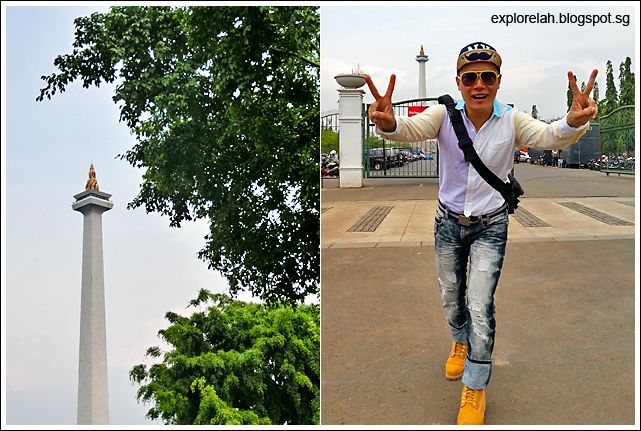 |
| Standing at a height of 132m at Merdeka Square, MONAS pierces the Jakartan cityscape like a massive acupuncture needle. According to ancient world theorists, obelisks are activation points around the earth's meridian to recharge the planet. So come to MONAS to get a charge of the Indonesian energy! |
 |
| Our visit coincided with a public demonstration on wage issues and the police was out in full force to try procuring peace. It was quite a thrill to see anti-insurgence squads and convoys of supersized paddywagons staking out in the area. |
 |
| MONAS is topped with a flame that's plated with 50kg of gold! I'm trying to push down the pillar to get to the gold. My classic yellow Timberland boots provided just the right traction to make it a reliable accomplice. Heh heh. |
 |
| A juxtaposition of the new (MONAS) and the old (Garuda) icons of Indonesia. |
MONAS stands within a sprawling park with lots of street peddlers selling souvenirs and crafts within the compound. Apparently, you can go into the tower but we didn't have time to check out the interior.
KOTA TUA (Jakarta Old Town)
Arguably, the center of Jakarta's modern history sprung from the Kota Tua district which was nicknamed the "Jewel of Asia" and the "Queen of the East" by 16th century sailors due to its strategic maritime location. Back in the old days, Kota Tua was considered the trade center for the Asian region which explains the many historic buildings, most that hail from the Dutch colonial era, still stand today as shadows of its glory days.
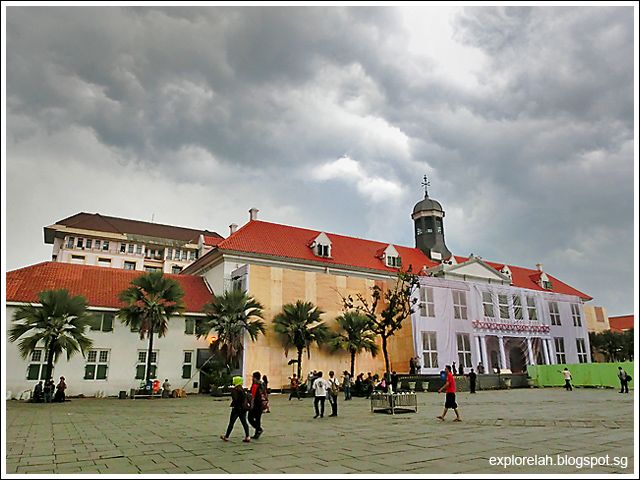 |
| There are a number of museums at Kota Tua square marked by the most prominent of them all, the Fatahillah Museum (aka Museum Sejarah Jakarta, Jakarta History Museum or Batavia Musuem). The former city hall of Batavia (Jakarta was named 'Batavia' under the Dutch East Indies colonization from 1800 to 1950), the building's age dates back to 1620 and houses an underground prison where iron balls (the size of volleyballs) chained to prisoners' feet can still be seen. Too bad that museum was undergoing renovation and we didn't get to see its collection. |
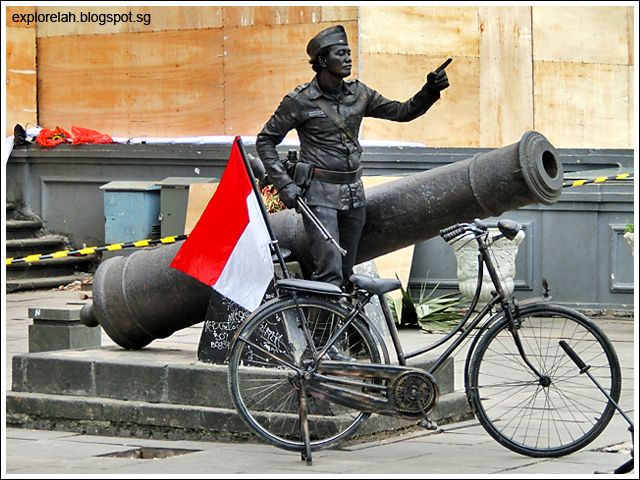 |
| Outside the museum were a couple of freeze artist and my favourite was this vintage war veteran posing by a canon. Simply brilliant! |
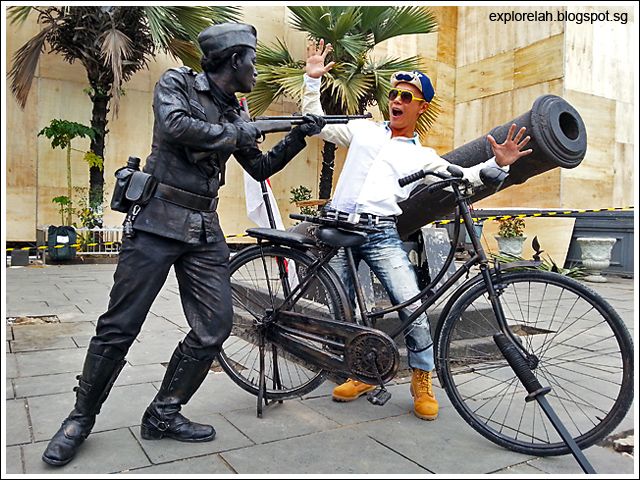 |
| Drop in some cash at his money box and you can get to pose for photos with him. There's no fixed amount so I gave him Rp20,000 (approx. S$2.10) |
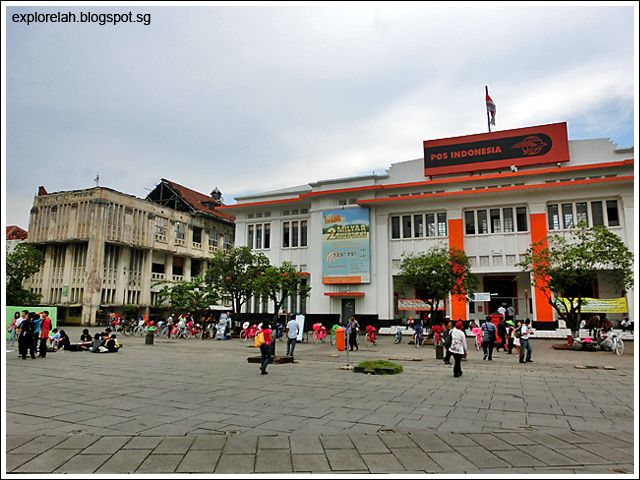 |
| Opposite the Fatahillah Museum is the old Post Office (Kantor Pos Kota). The refurbished Post Office contrasted sharply with the abandoned and decaying old warehouse to its side. |
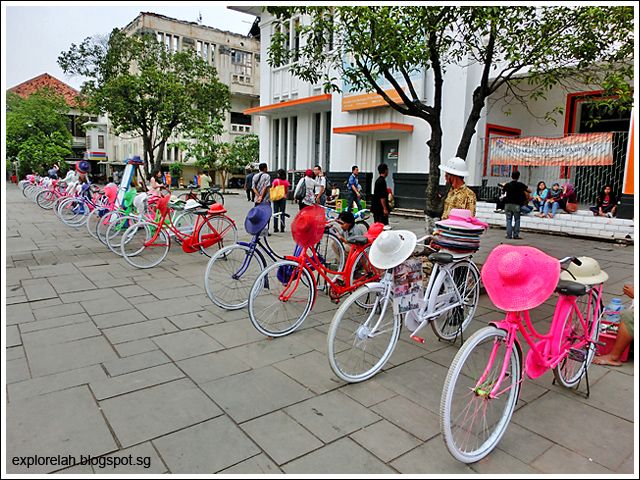 |
| What really caught our eyes at Kota Tua were the uber retro ontel (or onthel) bicycles pimped with psychedelic colours! |
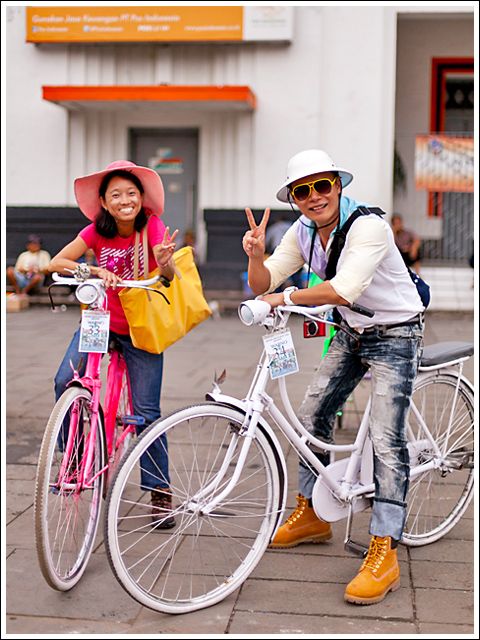 |
| We decided to ride back in time with a one hour tour of old Jakarta on the ontel bicycles. The guided tour plus bike rental costs around S$5.00 (Rp50,000). The tour was supposed to cover 5 historic sites but due to us taking longer at each destination to take photos, we managed to only do 3 in the hour. |
 |
| Our first stop was the strikingly red Toko Merah (meaning Red Shop). One of the oldest building in Jakarta built in 1730, Toko Merah was home to the Governor-General of the Dutch East Indies and a few other Governors before being turned into a Navy Academy and finally hotel. |
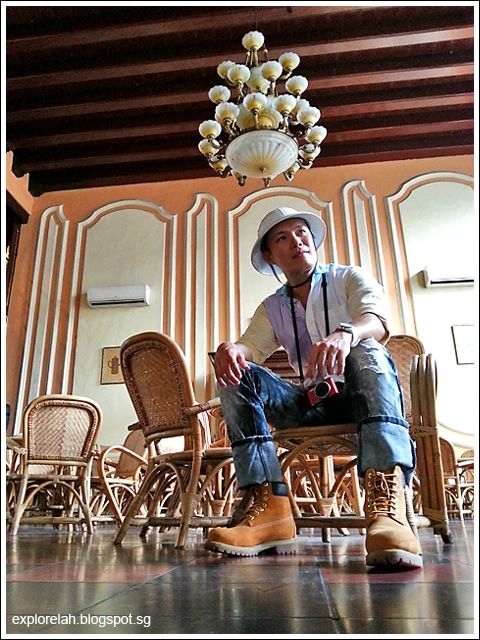 |
| Today, Toko Merah serves as a conference hall and commercial gallery. An entrance fee applies to view the gallery and we missed going in due to time constraint but we didn't pass over an opportunity to camwhore at the retrolicious café near the entrance! |
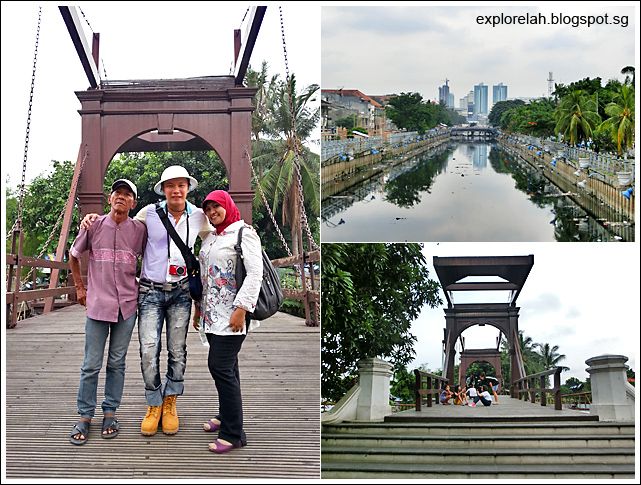 |
| A short ride from Toko Merah brought us to Kota Intan Drawbridge (known during its heydays as Large Tree Bridge and Chicken Market Bridge). Built in 1628, the drawbridge is the only bridge of its kind ever built by the Dutch Government and hence its historic value. We could smell the river while standing on the bridge. |
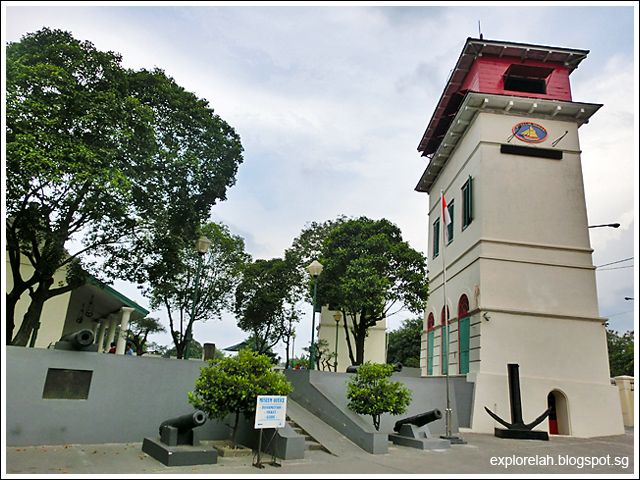 |
| Our third and last stop was the Menara Syahbandar (Syahbandar Port Tower), a former defense tower erected in 1645 and at 77 steps to the top, it was the tallest structure in the old days. |
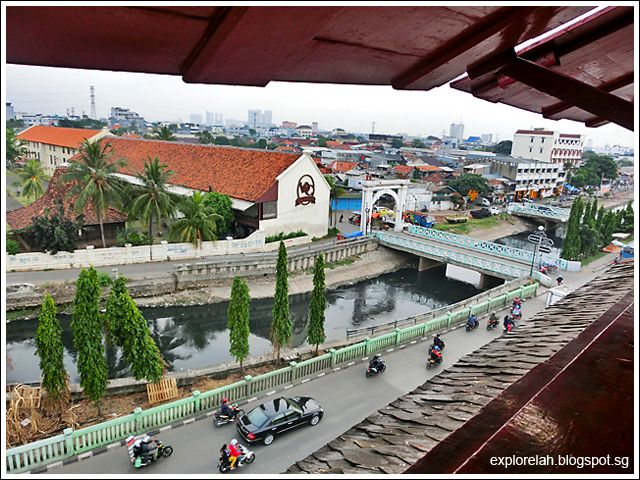 |
| The tower served as a watch for boats and ships plying the port and is today an excellent vantage point to get an eyeful of Jakarta's heritage district. |
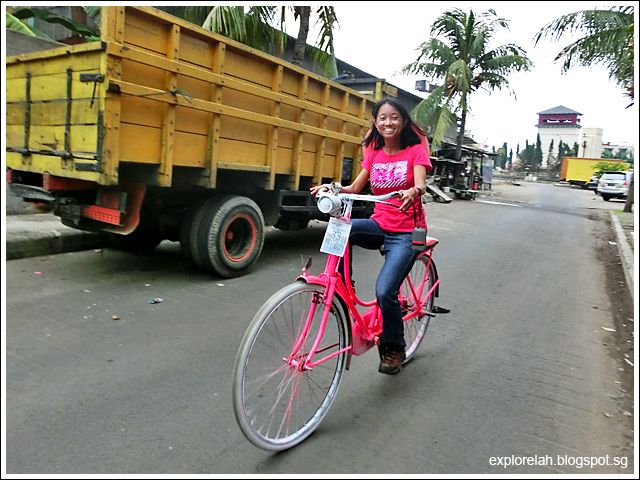 |
| Pink on pink... Siow Har was rode warrior for the day for battling the scary Jakarta traffic as we cycled to the various historic attractions. |
Our tour of the historic sites was brief but it took us almost half a day. To really appreciate Kota Tua, I would set aside a full day so that there is ample time to drop in at the various museums as well (there was a Wayang Museum we really wanted to see but it was closed during our visit).
The most nerve-wrecking yet exciting part of history chugging at Old Jakarta was the ontel bike tour where we cycled alongside, and sometimes onto the clogged city streets with motorists obeying not just the traffic lights, but a wave of hand by cyclists to be given a safety of passage. If you would like to grow some balls, an ontel bicycle ride beyond Kota Tua would definitely fill the sacs!
RAGUSA
Address : Jalan Veteran I, No. 10 Jakarta Pusat (Central Jakarta) DKJI, Jakarta 10110
Tel : +6221-384-9123
Our journey to experience all things historic in Jakarta brought us to Ragusa Es Italia, a gastronomical relic that has been delighting the locals since 1932 with its homemade preservative-free ice-creams.
The café was opened by 2 Italian brothers (Luigi and Vicenzo Ragusa) and expanded with several outlets throughout Jakarta but the ice-cream chain melted under the heat of competition. Thankfully, the brand was survived by its original flagship shop at No. 10, Jalan Veteran I.
 |
| Walking into Ragusa was akin to time travel with yesteryear furnishings... |
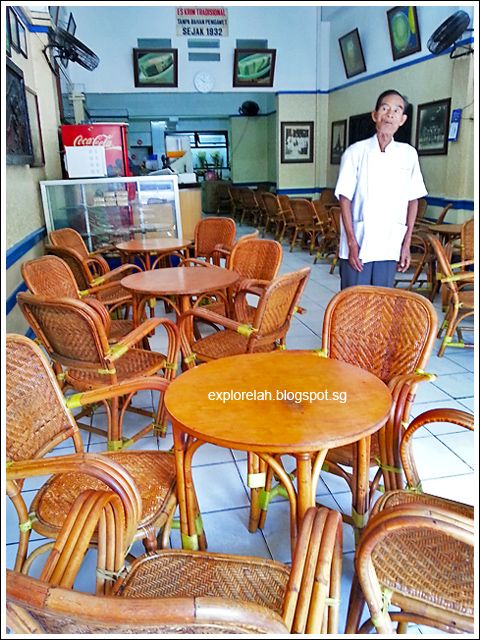 |
| ... and staff that is nostalgia on legs. |
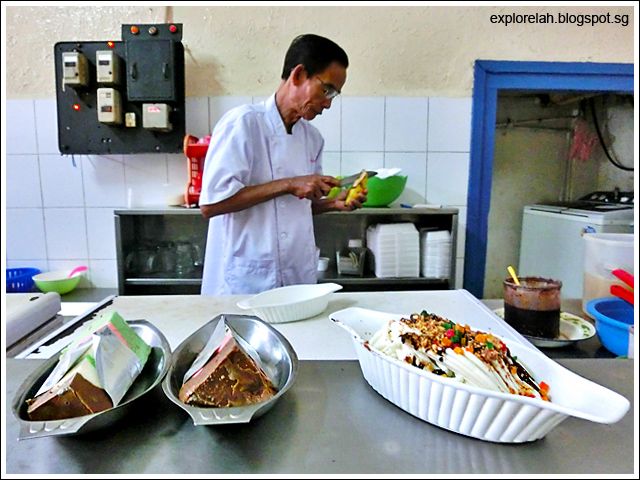 |
| A creamy serving of classics. |
 |
| We picked the following from the menu... Special Mix (Rp20,000), Cassata Siciliana (Rp25,000), Tutti Frutti (Rp25,000), and the very intriguing Spaghetti Ice Cream (Rp30,000). |
 |
| Apart from desserts to cool off, you can also order some Indonesian favourites such as Gado Gdao, Otak-Otak and Mie Juhi from street hawkers outside the shop. |
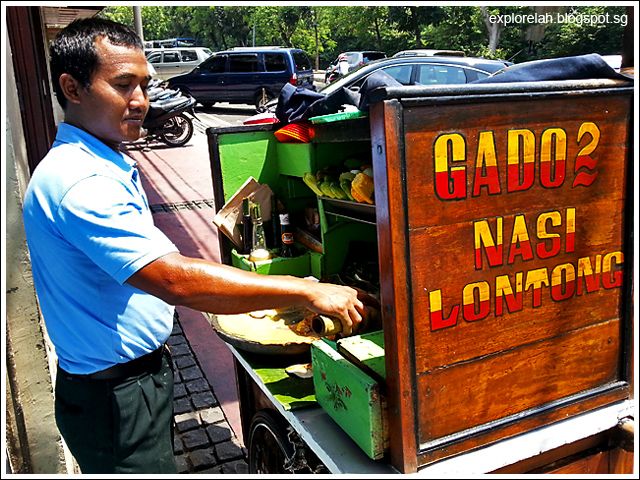 |
| The Gado Gado was excellent with sauce like thick, satisfying peanut butter. The street vendors seem to appear at the doorstep of Ragusa around noon so you may not see them if you go too early. |
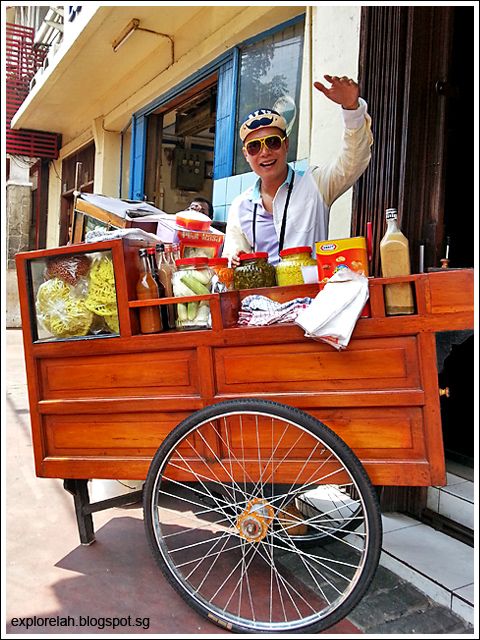 |
| Bringing forward a throwback, Ragusa and its street hawkers offer an authentic induction into the flavours of Old Jakarta. |
DAPUR BABAH RESTAURANT
Address : Jalan Veteran I, No. 18-19, Jakarta Pusat (Central Jakarta), DKJI Jakarta 10110
Tel : +62 21 7060 2256
Located along the same street as Ragusa is
Dapur Babah (Baba Kitchen), a Javanese-Peranakan restaurant that fuses Chinese and Indonesian cuisines in a homage to the cross-cultural union during the colonial era where early Chinese settlers married local Javanese women. I was surprised that Jakarta has a celebrated Baba-Nyonya culture since the Peranakans' genesis and proliferation seem to be contained within the Straits territories of British Malaya (chiefly in Penang, Melaka, and Singapore). My world has been expanded.
But although Dapur Babah is Peranakan, its menu is different from the staple of Nyonya food popularized in Melaka. We didn't find ayam pongteh, ayam buah keluak, or the asam dishes we are familiar with. Instead, we were introduced to a Peranakan culinary compass that pointed in all directions of the Indonesian archipelago with elements of Javanese, Sundanese and even Balinese flavours evident on our lunch table.
 |
| Converted from two adjoining shophouses constructed in 1940, Dapur Babah looks misplaced amongst the mostly aging shops along Jalan Veteran I. Effort was spent to make the restaurant's visage stand out but it fell a few points short of being a spectacle. With the banner and overcrowding of potted greens obscuring the restaurant's name, I didn't figure that it was a restaurant when I passed it the first time. |
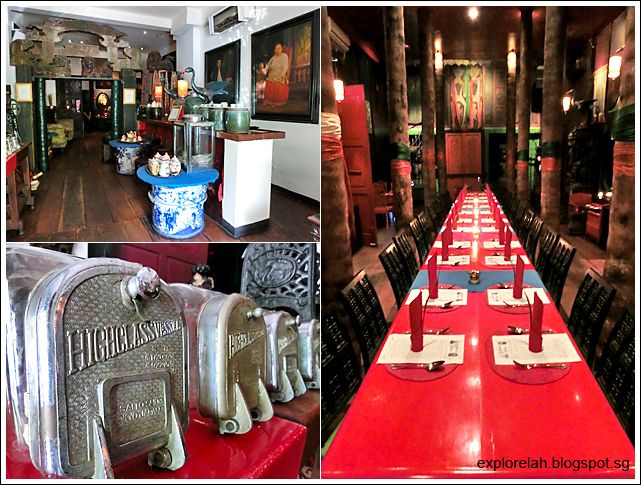 |
| Although Dapur Babah's entrance felt rather nondescript and untidy, the interior was an absolutely gorgeous visual feast! |
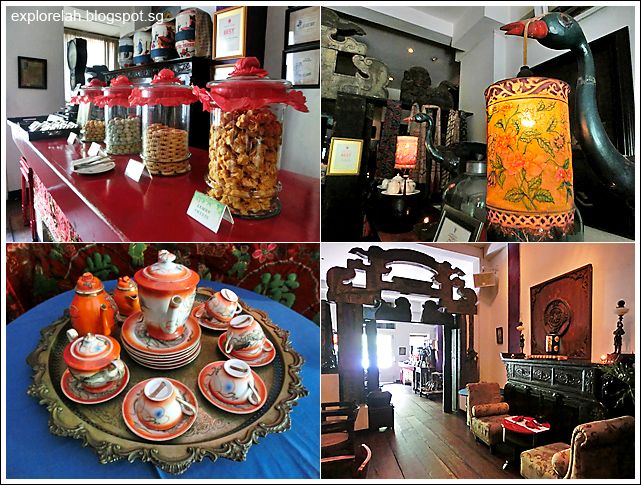 |
| Antique furniture and an eclectic collection of yesteryear knick-knacks resurrected the rich colours of tradition in bygone eras. Dapur Babah has 6 distinctive dining spaces, each crafted to leave a lasting impression of this wonderland of time. |
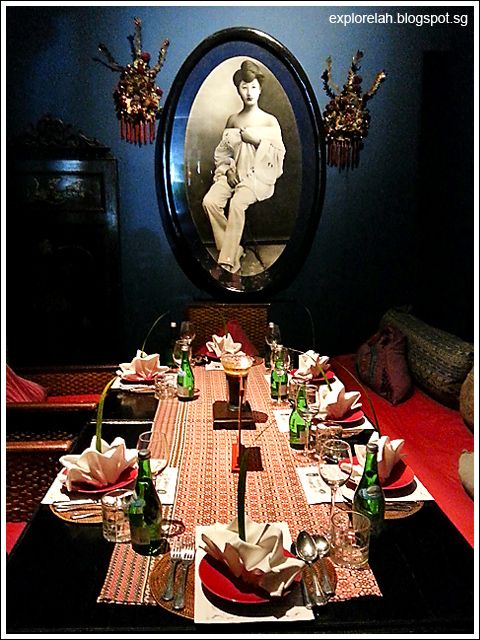 |
| The seating décor most immediately captivating once pass the reception of Dapur Babah is Angela's Room. Inspired and named after the 16th concubine of the immensely wealthy Chinese Indonesian sugar baron Oei Tiong Ham, Angela was his favourite. Looking at her pre-Playboy photo on the wall, it's easy to see why Mr Oei did stiff business with his sugar cane. |
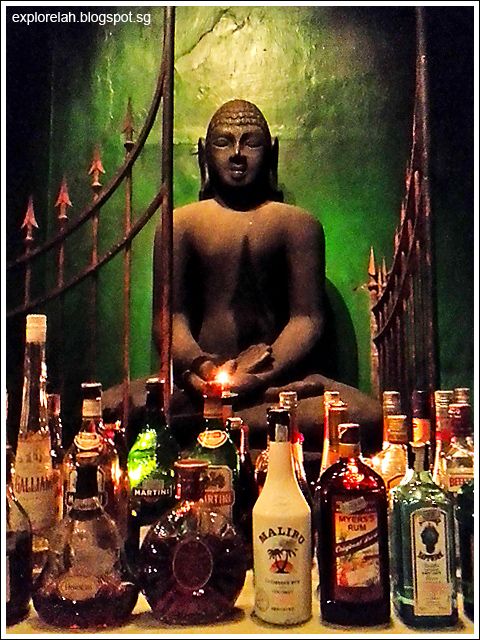 |
| The quickest way to nirvana is at the adjoining Tao Bar with Boozeddha! |
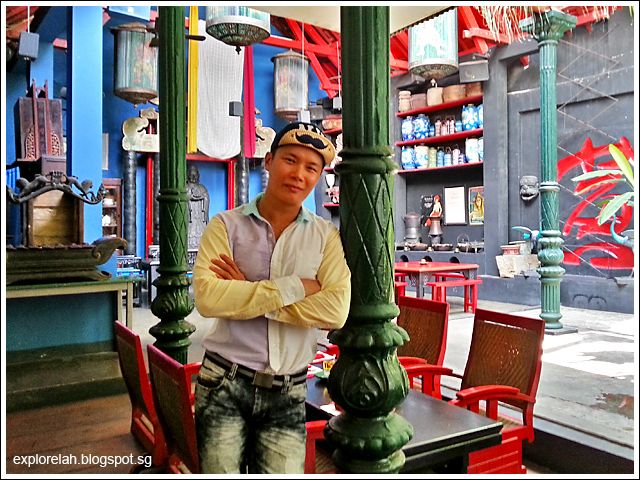 |
| My favourite venue at Dapur Babah was the semi open air terraced Babah Garden. |
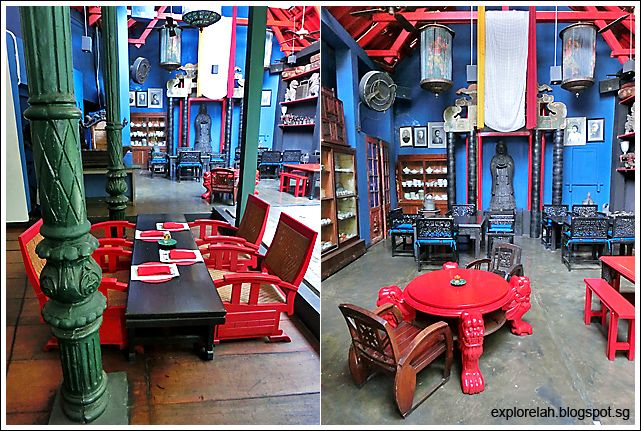 |
| Deliciously decked out in jade green, chilli red and cobalt, the period movie set worthy Babah Garden is a photographic dream. We were the first patrons when the restaurant opened at 11am and had the place all to ourselves to go shutter crazy! |
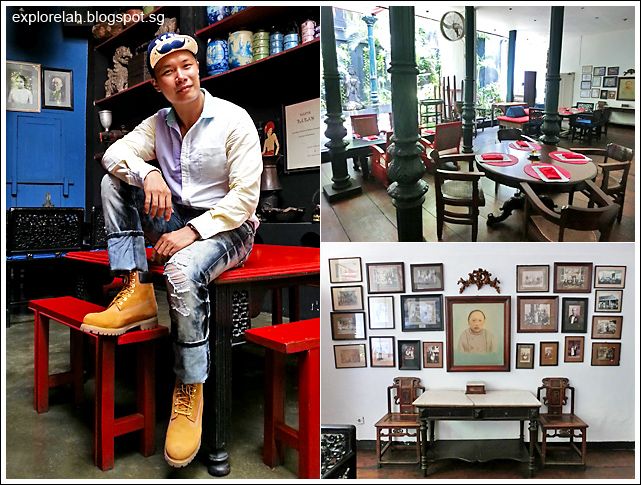 |
| One end of Babah Garden was filled with time windows that provided a glimpse of early Peranakan lifestyle of the Oei clan and other powerful Indo-Chinese families. |
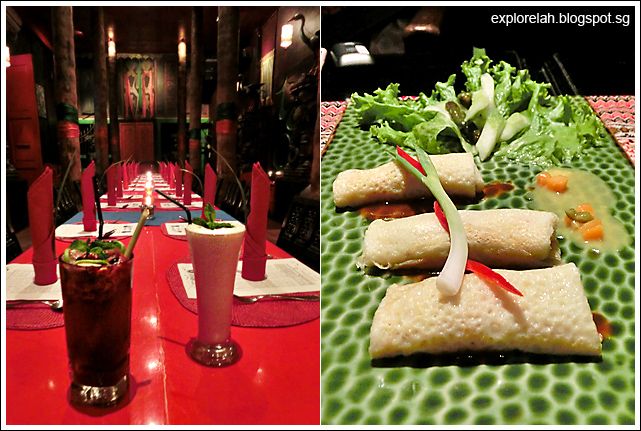 |
| After good finger workout snapping with my phone cam, it was time to settle down for lunch with a cocktail menu that matches the hors d'oeuvres and main courses in exotica. For starters, we quenched with 2 cocktails from Tao Bar and whetted the appetite with Loempia Basah (Rp42,000). The popiah-like crepe wrapped with chicken and shrimp on taoco sauce resembled the white-skinned savoury version of kueh dadar (a Peranakan dessert) oozing gula Melaka. |
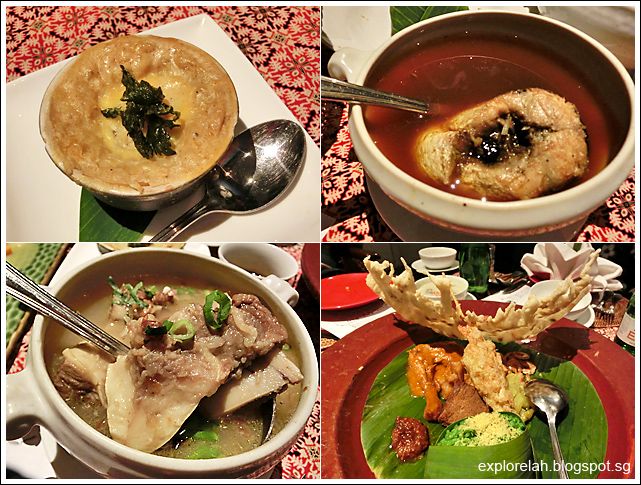 |
| Photos : (Top Left) Pastel Toetoep (Rp48,000) is a Dutch-influenced potato pie with glass noodles, ear fungus, snow peas, egg and ox tongue. (Top Right) Garang Asam Bandeng Blimbing Woeloeh (Rp48,000) is the Javanese version of asam fish but less sour. (Bottom Left) One of the Indonesian favourites is the Oxtail Soup which was good to the last drop at Dapur Babah. (Bottom Right) The most wayang dish goes to Nasi Tjampoer Babah (Rp68,000) with its dramatic presentation and flavoured rice wrapped in banana leaf. |
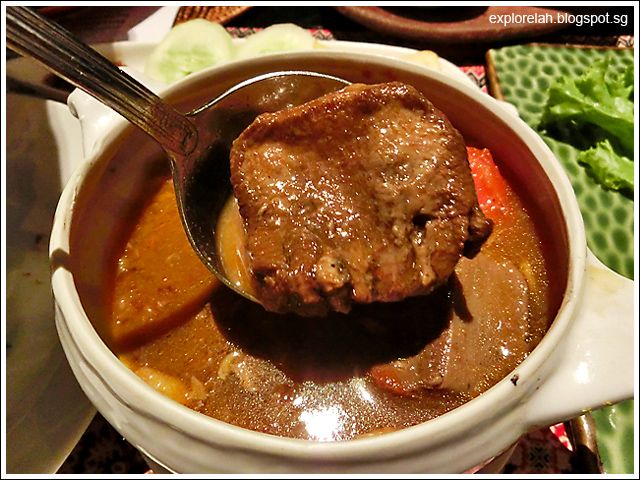 |
| Smoor Lidah Babah (Ox Tongue Soup) didn't sound too appetizing as we hardly eat that in Singapore but it turned out a winner with me. I rather enjoyed the ox tongue's texture and the aroma of spices that have steeped into the organ. |
 |
| Another presentation thumbs up was the Chicken Sate heated with a personal terracotta charcoal stove! It's a photo magnet but my advice is to click quickly and eat before the meat gets too tough from being overcooked by the heat. |
Dining at Dapur Babah is the equivalent of having a meal in an art and decor museum replete with authentic time forgotten paraphernalia, mementoes and thingamajigs. The atmosphere was great despite a couple of electrical blackouts while we lunched and staff were helpful but lacked warmth.
Food-wise, quality and presentation were rated high but I can't quite distinguish traditional Indonesian palates from Indo-Peranakan cuisines. Maybe the Indonesian food I've been having all along in Singapore is already of the Indo-Peranakan lineage. Nonetheless, Dapur Babah is definitely worth the legwork while in Jakarta.
STREET FOOD
From retro Italian confects to groovy-glam Peranakan nomnoms, we next found our stomachs at a popular food street (Jalan Pecenongan) for that bona fide Indonesian dining experience.
The roadside was lined seam-to-seam with makeshift shelters and huge PVC banners and as simple as that, one 'restaurant' distinguishes itself from the next.
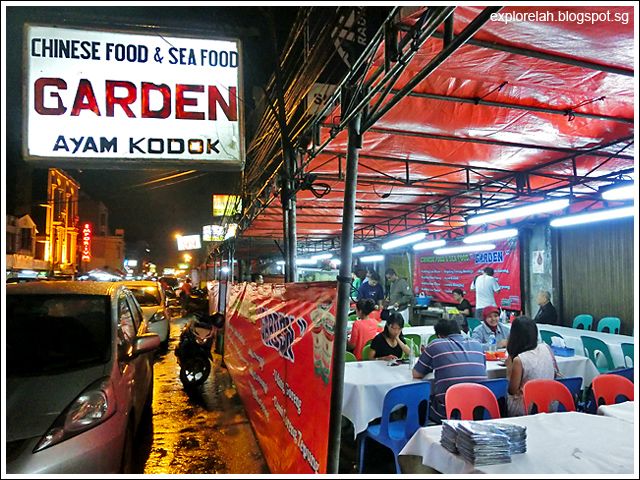 |
| We decided to try the Indonesian version of Chinese zi-char at this stall called Garden. |
 |
| Street peddlers go from table to table to sell anything from batteries to souvenirs to books. There were even street performers doing the ondel-ondel (an Indonesian folk performance with huge puppets that originate from Betawi), lion dance to the Chinese oldie '甜蜜蜜', and even a transvestite who sang and danced at our table until we gave her some money! The whole experience was kinda bizarre yet exhilarating at the same time. Prepare lots of small notes when eating at the streetside to give to these unsolicited 'performances'. |
 |
| We ordered sweet ad sour fish, seafood fried rice, fried noodles, deep-fried frog legs and stir-fried kailan. Prices weren't expensive and the dishes were palatable but suited to local taste. |
 |
| Our exploration of street food continued after Garden Chinese Seafood with Sate Babi (pork satay). As pork is usually not eaten in Muslim countries, eating pork satay in Jakarta was something like tasting the forbidden fruit. |
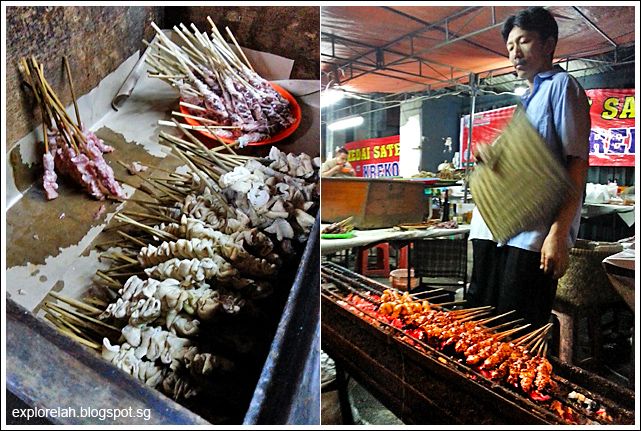 |
| As I was quite filled from dinner, I didn't try the pork satays. But my friends who had them told me that the meat was rather tough. |
Grand Mercure
After a very eventful day exploring the architectural heirlooms of the city and its gastronomies, we checked into
Grand Mercure Jakarta Harmoni Hotel. The 5-star accommodation sits at a prime spot in the CBD area of Central Jakarta just minutes from MONAS and Old Jakarta (Kota Tua). Opposite the hotel is the Gajah Mada Shopping Mall so its location is really convenient.
 |
| Contemporary, modern and chic, our room was spacious and the beddings extremely comfortable. |
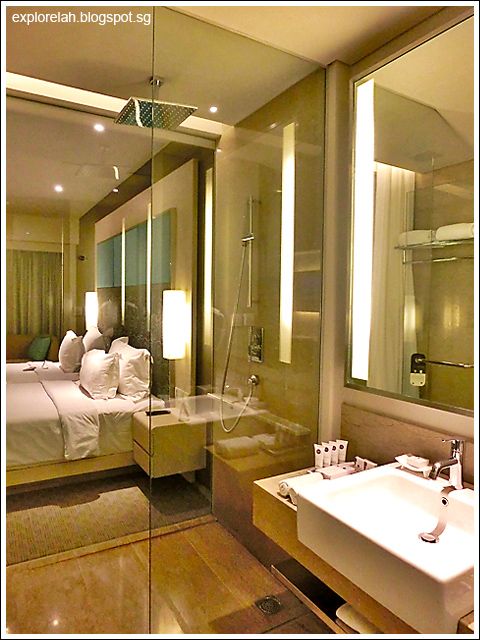 |
| But the transparent glass sheet separating the bedroom from the shower was too kinky for friends sharing the room. A curtain is provided to screen off the live showering show but when the bedroom lights are dimmed and the bathroom lights are on, you can still get a mild shadow parade. Hur hur... *blush* |
Sleep came easily that night. As I laid there listening to the gentle snore on the other bed while drifting into a dream world of my own, I recounted all that I've seen and experienced on day one of my first visit to Jakarta.
The traffic jams are patience-testing and the sights are not always well manicured, but there's a certain raw energy in the way the Jakartans try to make a living every way possible that invigorates me. Every streetside, every corner, there's bound to be someone selling something. It could be a pushcart offering food and drinks, a small stall retailing sundries, or souvenirs that have grown feet, their enterprising spirit got me to confront my procrastinations and excuses at doing some of the things I wanted to do. Others may find the constant stream of peddlers looking for a sale rather pesky, but I was moved by their being earnest.
As I shut down for the night, I can't help feeling that I've only seen the tip of the tip of the city's tourism iceberg. But as I learnt, appreciating Jakarta goes beyond seeing. The city has to be felt.
This post has been made possible by Jakarta Tourism Office (represented by Russell Cheong, Winsemius Consulting). For more vacation insights on Jakarta, visit http://jakartasavvy.com/
Walking around Jakarta made taller and more fearless with Timberland classic yellow boots.
